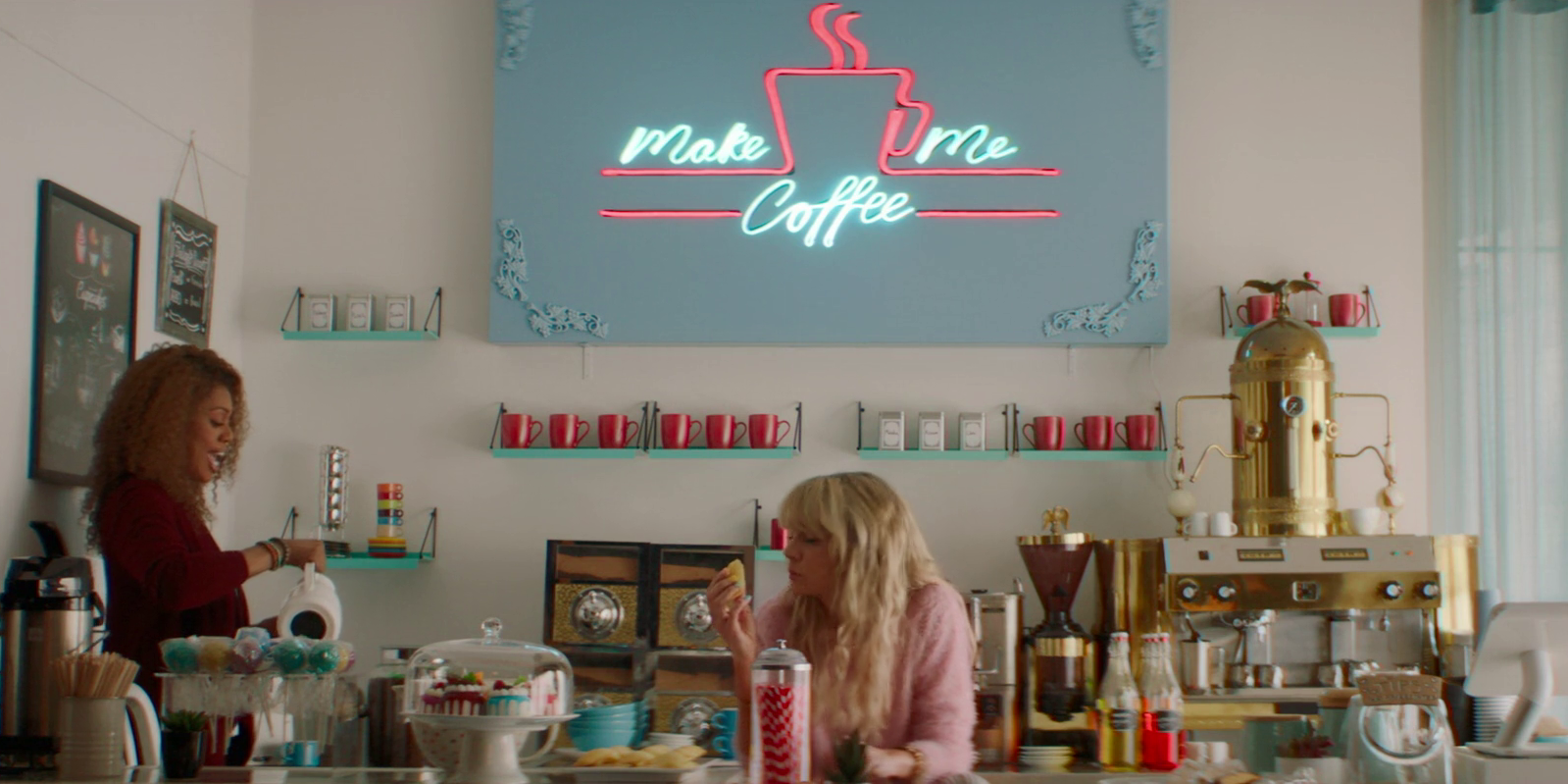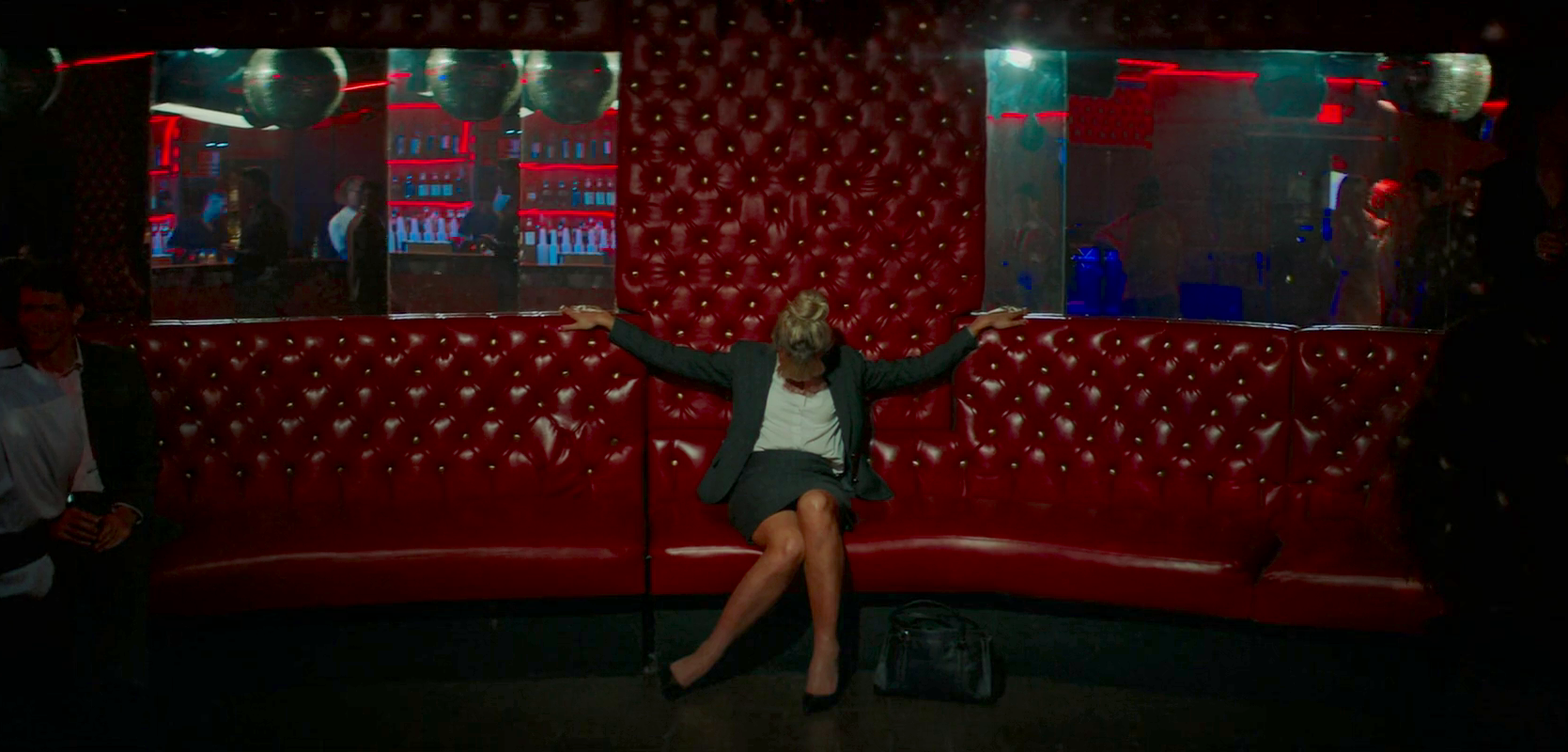"The Furniture," by Daniel Walber. (Click on the images for magnified detail)
The best part of Promising Young Woman, aside from Carey Mulligan’s performance, is the look. It’s refreshing to see a comedy with so striking a visual sensibility, a neon nihilism that leaps off the screen. It’s certainly the first time I’ve ever seen coffee shop decor that I could describe as “snide.”
The work put in by production designer Michael Perry, art director Liz Kloczkowski and set decorator Rae Deslich is remarkable. Promising Young Woman has such a heightened visual sensibility, occasionally its own plot seems surprisingly tame in comparison...
It’s just so unexpected that a night that begins with this harrowing dive bar set doesn’t end in murder for Jerry (Adam Brody).
The film is full of wry flourishes, details that mythologize Cassie’s presence. In one scene, she gets a blue halo - an odd architectural feature of the Instagram-ready cafe where she works.
Opposite Madison (Madison) at lunch, on the other hand, she sits directly under the only red light fixture in the room. Is she an agent of heaven or hell?
So many spaces are cloyingly bright and colorful, from the ridiculous neon pharmacy to the ice-cream-colored diner.
But what I found most interesting is the film’s use of set decoration as an instrument of derision, relentlessly skewering Cassie’s targets. Jerry’s bedroom is lit with a chain of jalapeno-shaped Christmas lights, while his living room features a dart board and an American flag with the outline of the USA spray-painted onto it.
Neil (Christopher Mintz-Plasse), the next victim, has more than one dreamcatcher in his living room.
Some of these details are nearly hiding in plain sight. I didn’t realize until looking back that the plants in Jordan’s (Alfred Molina) gravely modernist home are all dead.
There is a wall of cowboy hats.
What do men put on their walls? Nothing good, to be sure. Intriguingly, though, the only totally non-descript apartment in the movie belongs to Ryan (Bo Burnham), ostensibly the least objectionable man.
I’m still on the fence as to whether we’re supposed to find him charming - after seeing his apartment, it’s hard to identify what Cassie sees in him. The place looks like an Airbnb, decorated to appeal to everyone and no one at the same time.
It’s odd, given how flamboyantly the design team represents the worst aspects of everyone else’s personality in their home decor. Then again, it does often feel as if Ryan’s personality doesn’t go much deeper than “he’s necessary to the plot of this film.”
Either that or those canvasses in the back are a vicious indictment of the flatness of America's straight men, who only recently came around to owning dress shirts in more than two colors and can’t possibly be expected to entertain such shifts in psychology as listening to victims of sexual violence.
Frankly, I think it’s a little of both.











